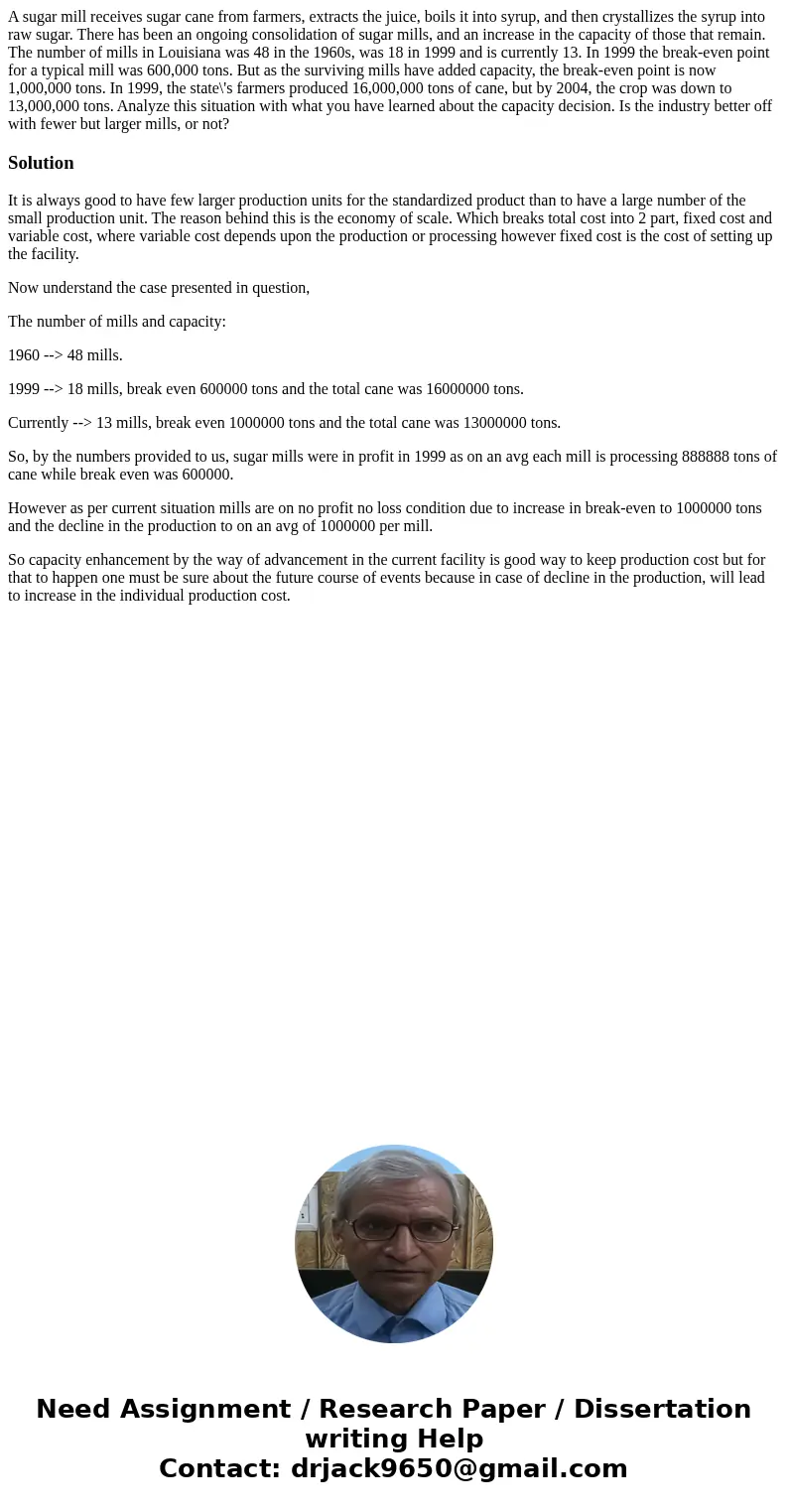A sugar mill receives sugar cane from farmers extracts the j
A sugar mill receives sugar cane from farmers, extracts the juice, boils it into syrup, and then crystallizes the syrup into raw sugar. There has been an ongoing consolidation of sugar mills, and an increase in the capacity of those that remain. The number of mills in Louisiana was 48 in the 1960s, was 18 in 1999 and is currently 13. In 1999 the break-even point for a typical mill was 600,000 tons. But as the surviving mills have added capacity, the break-even point is now 1,000,000 tons. In 1999, the state\'s farmers produced 16,000,000 tons of cane, but by 2004, the crop was down to 13,000,000 tons. Analyze this situation with what you have learned about the capacity decision. Is the industry better off with fewer but larger mills, or not?
Solution
It is always good to have few larger production units for the standardized product than to have a large number of the small production unit. The reason behind this is the economy of scale. Which breaks total cost into 2 part, fixed cost and variable cost, where variable cost depends upon the production or processing however fixed cost is the cost of setting up the facility.
Now understand the case presented in question,
The number of mills and capacity:
1960 --> 48 mills.
1999 --> 18 mills, break even 600000 tons and the total cane was 16000000 tons.
Currently --> 13 mills, break even 1000000 tons and the total cane was 13000000 tons.
So, by the numbers provided to us, sugar mills were in profit in 1999 as on an avg each mill is processing 888888 tons of cane while break even was 600000.
However as per current situation mills are on no profit no loss condition due to increase in break-even to 1000000 tons and the decline in the production to on an avg of 1000000 per mill.
So capacity enhancement by the way of advancement in the current facility is good way to keep production cost but for that to happen one must be sure about the future course of events because in case of decline in the production, will lead to increase in the individual production cost.

 Homework Sourse
Homework Sourse